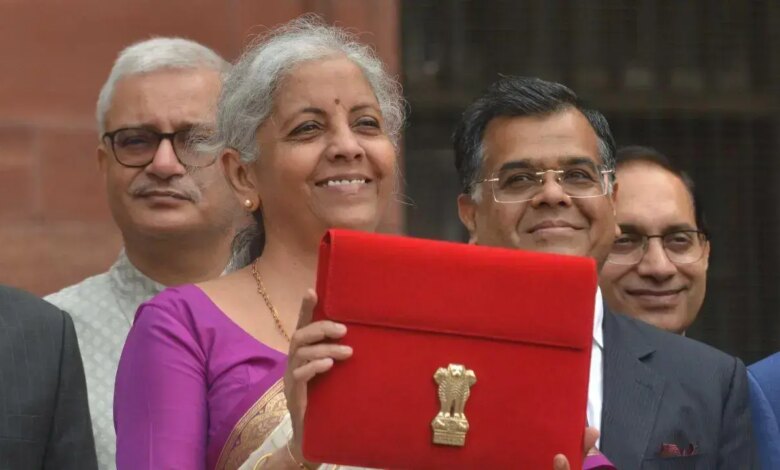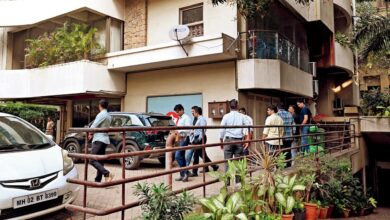Budget 2025: Rs 4.49 lakh crore for women, but will it make a difference?

The gender-focused allocations in the Union Budget 2025-26 have increased significantly to 8.86 per cent from last year’s 6.8 per cent. Finance Minister Nirmala Sitharaman has highlighted women as one of the four focus groups for development, dedicating Rs 4.49 lakh crore to their welfare schemes. While the numbers present an optimistic picture, how do women from different walks of life perceive this allocation?
While there is a sense of optimism, there is also a call for caution and transparency. Women across different sectors – from corporate professionals to homemakers – are looking for not just numbers on paper but seek tangible, grassroots-level change.
Corporate professionals: Optimism with questions
For 25-year-old Mumbai-based data analyst Ritika Saxena, the increase in the budget allocation is a positive step forward. “It’s encouraging to see more ministries contributing to the Gender Budget.
But the real challenge is ensuring these funds are used efficiently. Policies should translate into tangible impact, and not just remain as budget figures,” she says, adding that while self-help groups and skill-building programmes are important, there is a pressing need for policies that promote equal pay and tax benefits for corporate women, as that would provide a real financial boost.
Twenty-six-year-old Mumbai lawyer Ananya Sharma also has similar concerns. “Women in workplaces still face pay gaps, career stagnation, and childcare challenges. While the Budget has rightly focused on self-help groups and rural development, there’s little for urban working women. Tax incentives for women-led start-ups or better maternity leave provisions would have been more helpful.”
Scepticism prevails on implementation
Social sector workers are also optimistic about the rise in funds but share a similar caution.
Shweta Railapurkar, 28, a non-governmental organisation (NGO) coordinator working on women’s health in rural Maharashtra, shares a similar sentiment.
While she welcomes the increase in funding for schemes such as ‘Mission Saksham Anganwadi’ and ‘Poshan 2.0’ which focus on maternal health and nutrition, she is wary of the execution. “Funds are allocated, but unless there is strict monitoring and implementation, their impact on the ground remains limited,” she says.
For homemakers such as 43-year-old Mani Asthana from Mumbai, the financial inclusion aspect of the budget is encouraging, but she remains sceptical about its real-world application. “On paper, the numbers look good, but how much of this will actually reach us? For example, schemes such as ‘PM Awas Yojana’ claim 100 per cent allocation for women, but many of us still don’t own homes in our names,” she points out. Her concern is further echoed by government data, which shows that only 23 per cent of homes under the Pradhan Mantri Awas Yojana-Grameen (PMAY-G) are actually allotted to women, despite the claim of 100 per cent allocation.
Women entrepreneurs expect more
The self-employed sector has seen substantial government push, especially through self-help groups (SHGs) and National Rural Livelihoods Mission (NRLM), which has moved from Part B to Part A of the Gender Budget this year.
Poonam Sharma, a small business owner running a tailoring shop, has been a beneficiary of these schemes. “The shift of NRLM to 100 per cent women-specific allocation is a good sign. I was able to get an SHG (self-help group) loan last year, and it changed my business. But many women in smaller towns still don’t know these schemes exist,” she says.
Moving beyond numbers
Some believe that the Gender Budget Statement remains an accounting exercise rather than a strategic framework to uplift women. They say that there is still ambiguity in the way funds are allocated, with some schemes, such as the ‘PM Matru Vandana Yojana (PMMVY)’, disappearing from the reports altogether.
While the Union Budget 2025-26 makes bold claims of prioritising ‘Nari Shakti’, its real impact will only be seen through effective implementation. Women from diverse backgrounds agree that while the increased allocation is a positive step, the government must ensure that the benefits reach those who need them most.
Sector-specific views
Dr Neelam Shah, who focuses on maternal and child health, believes that more targeted efforts are needed to ensure that the benefits of schemes such as ‘Mission Saksham Anganwadi’ and ‘Poshan 2.0’ reach rural women. “Without clear allocation guidelines and strict monitoring, the funds may not reach those in the remotest areas,” she explains.
Speaking about the education sector, Priya Bedekar, a teacher, is hopeful that the 33.67 per cent allocation for school education will bridge learning gaps and improve girls’ education. “Proper execution of funds can help bring about significant changes in girls` access to quality education,” she says.
‘Accountability is the key’
Despite the rise in allocations, concerns remain over the implementation and transparency of these funds. Social activist Deepa Pawar points out, “The government has the intent, but reports suggest that schemes such as Pradhan Mantri Awaas Yojana-Grameen (PMAY-G) show gaps between promises and execution. If only 23 per cent of homes are being allotted to women when 100 per cent of funds are allocated to them, there is a major discrepancy.”
The road ahead
A notable addition in this year’s budget is Part C, which covers schemes that allocate less than 30 per cent for women. This suggests an effort to involve all ministries in gender budgeting.
As India works toward creating more gender-inclusive policies, the increase in the Gender Budget is undeniably a step in the right direction. But for this increase to translate into real change, the government will need to focus not just on the numbers, but on efficient implementation and transparency. Only then will the benefits of these schemes truly uplift women in everyday life.
Source link





